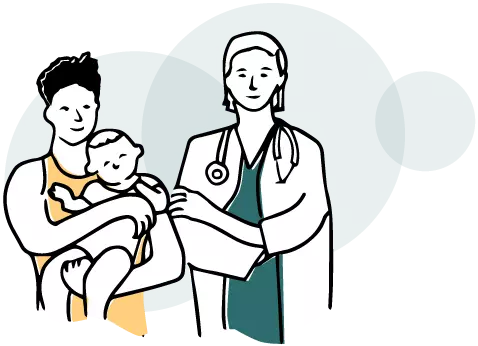

Introduction to the Multidisciplinary Team (MDT) Approach

The management of a patient with Hunter syndrome requires the main physician to be aware of the multisystemic issues (e.g. nervous, respiratory, and musculoskeletal systems) surrounding the patient, therefore a multidisciplinary team (MDT) approach is required.1,2
Due to the broad nature of the clinical symptoms, often the involvement of specialists such as anesthesiologists, cardiologists, ENT specialists, neurologists, pediatric surgeons, ophthalmologists, orthopedic surgeons, pulmonologists, and otorhinolaryngologists is required.1
As MPS II affects many domains of life, supportive services such as physiotherapists, dentists, occupational therapists, speech therapists, audiologists, and behavioral therapists also play a crucial role in disease management.1
The MDT approach requires coordination of all different specialists by the pediatrician or family practice physician.1 Patients should be regularly monitored to check progression of the disease or emergence of any new signs and symptoms, and to anticipate any possible complications.2,3 Supportive management can greatly improve the quality of life of affected individuals and their families.3
Transitioning from pediatric to adult care
As patients with Hunter syndrome reach adulthood, the responsibility for patient care is transferred from the pediatric to adult care team, which may involve an entirely new MDT consisting of adult specialists.4,5 The coordination of the MDT shifts from the pediatrician or family practice physician to another main physician,who also oversees the transition.1,4,5 This could be a primary care physician, a nurse, a social worker, or another healthcare professional,4 ideally with an existing understanding of Hunter syndrome.
Transition of Adolescents into Adulthood
Key considerations:
Smooth transition
The goal of a smooth transition is for young adult patients to be guided from pediatric to adult care whilst maintaining regular monitoring of their disease, preserving important clinical information, and meeting the individual needs of the patient.4,5 This can be achieved by careful planning and coordination, and it may be useful for the pediatrician and adult physician to discuss the transition.4 Adolescent patients should be given opportunities to discuss their needs without their caregivers present so they feel more independent; however, the caregivers, who have been taking care of their loved one for so long and may find the transition difficult, may also need support.4
1. Burton BK, Giugliani R. Eur J Pediatr. 2012;171(4):631-639. 2. Muenzer J et al. Pediatrics. 2009;124(6):e1228-e1239. 3. Gupta A et al. BMJ Case Rep. 2015;2015:bcr2015209305. 4. Lampe C. “Transition of Adolescents into Adulthood.” 2014. Presentation. 5. Mitchell J et al. Eur J Intern Med. 2016;34:2-10. 6. Stepien KM et al. Orphanet J Rare Dis. 2020;15(1):114.
Hunter syndrome is a
progressive genetic disease
If you suspect Hunter syndrome, refer your patient to a metabolic geneticist for an accurate diagnosis.